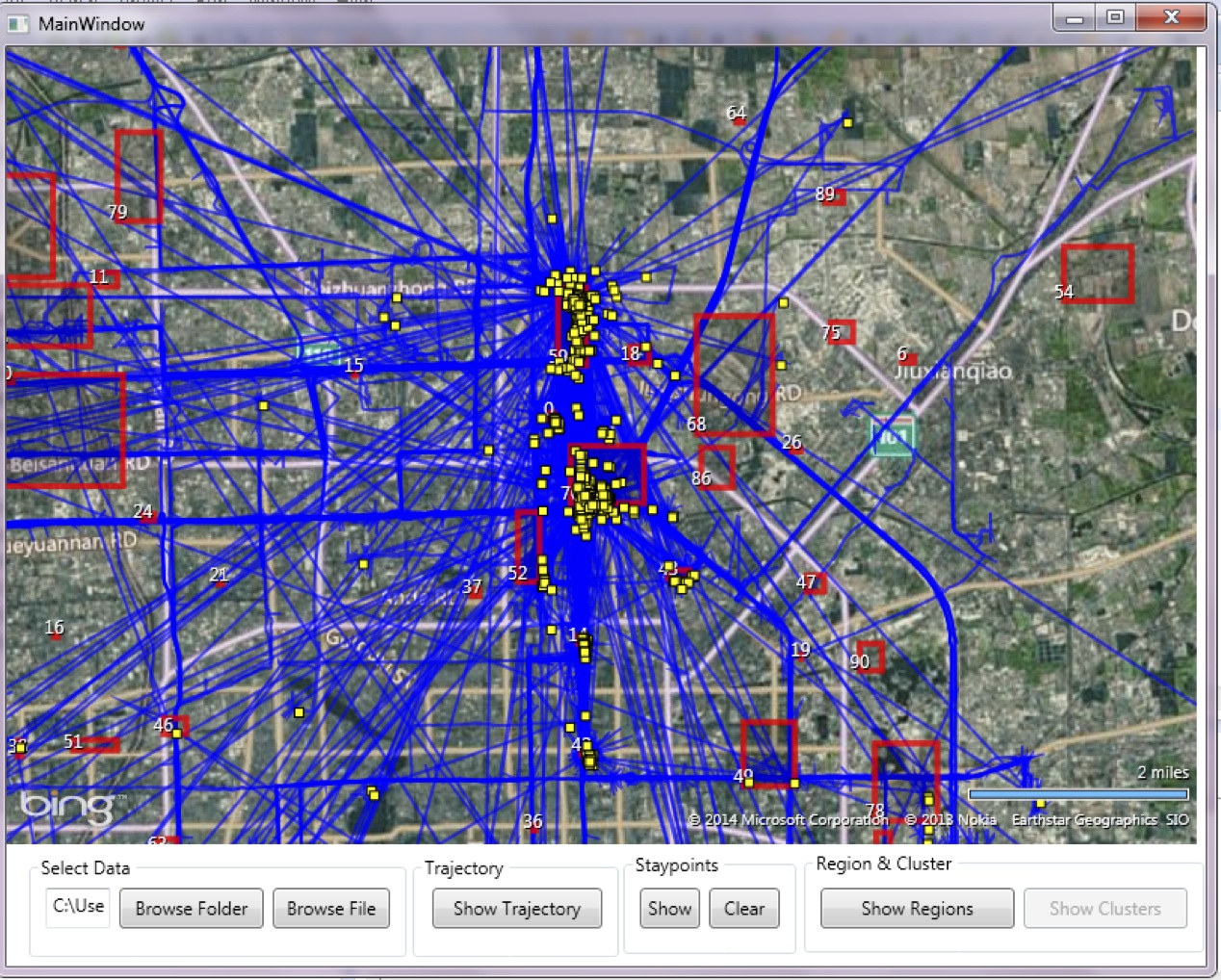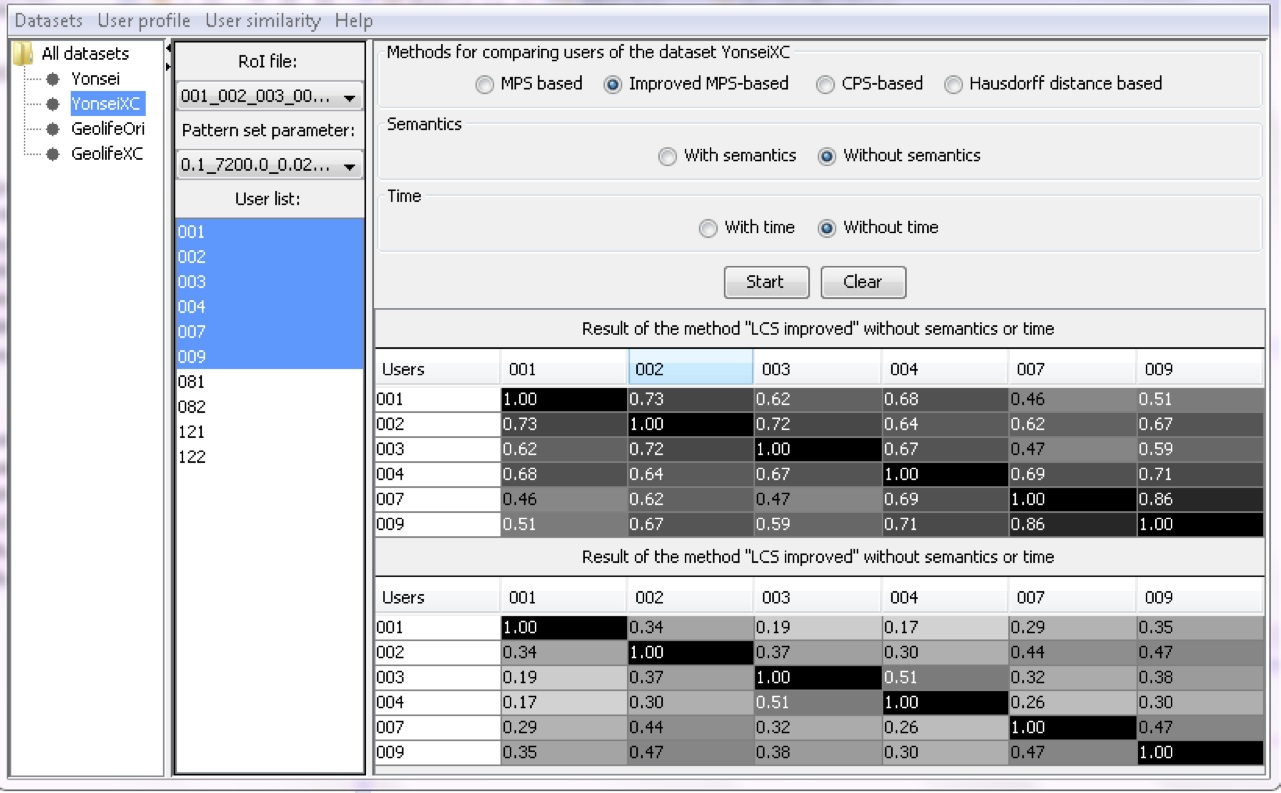MinUS: Mining User Similarity with Trajectory Patterns
Description
This tool, MinUS, integrates the technologies of trajectory pattern mining with the state-of-the-art research on discovering user similarity with trajectory patterns. Specifically, with MinUS, we provide a platform to manage movement datasets, and construct and compare users’ trajectory patterns. Tool users can compare results given by a series of user similarity metrics, which allows them to learn the importance and limitations of different similarity metrics and pro- motes studies in related areas, e.g., location privacy. Additionally, MinUS can also be used by researchers as a tool for preliminary process of movement data and parameter tuning in trajectory pattern mining.
Function Modules
The architecture of MinUS is shown below.
MinUS has three function modules. The first module, data management, is in charge of managing movement datasets which are collected by different organisations. Such a dataset consists of a number of users whose movement is stored in the form of daily trajectories. This module keeps track of the statistic information about the users in each dataset. The statistics will be updated automatically once the values of the fields are available.
The second function module, mobility mining, takes users' daily trajectories as input and outputs their trajectory patterns. At the first step, we traverse all of the selected users' trajectories and detect their stay points, the centroids of small areas where a user stayed for a certain amount of time. A place of interest (PoI) is an area where users frequently visit, stay for a while and preform certain activities, such as supermarkets and theatres. Based on this interpretation, at the second step, we calculate users' PoIs by identifying the regions where stay points are densely located. We implement a hierarchical clustering algorithm to calculate the clusters of stay points which are close to each other. Outlying stay points that are isolated from other points may increase the size of some PoIs. We make use of LOF (local outlier factor) to measure the extent of isolation of a stay point and remove a certain percentage of stay points that are most isolated. With extracted PoIs, users' trajectories are transformed into sequences of PoIs. At the last step, we explore the trajectory pattern mining tool T-Pattern Miner of Giannotti et al. to extract trajectory patterns. With a visualisation interface called MapView, tool users can put all the intermediate results on the map. We show the screen shot of the visualisation interface.

The third module, similarity calculation, calculates the similarity values between users selected by tool users using the chosen similarity metric. The tool users start with selecting a subset of users and the tool will return the similarity values between any two selected users. The results are visualised by a grid where the grey level of each cell indicates the similarity values between a pair of users. So far, we have implemented three categories of user similarity metrics: maximal trajectory pattern based (check this paper, this paper, and this paper), common pattern set based (check this paper) and Hausdorff distance based (check this thesis). MinUS also allows for taking into account location semantics and temporal semantics in the calculation. Location semantics denotes the functionalities of a PoI, e.g., restaurant and school, while temporal semantics represents the information revealed by time, e.g., weekends and weekdays.

Download
- You can download the compiled version of the program here.
- The source code of the program is available here.
- A user manual is available as standalone download here.
- An example dataset can be downloaded here.
Requirements
The tool requires JDK 7 or later.

